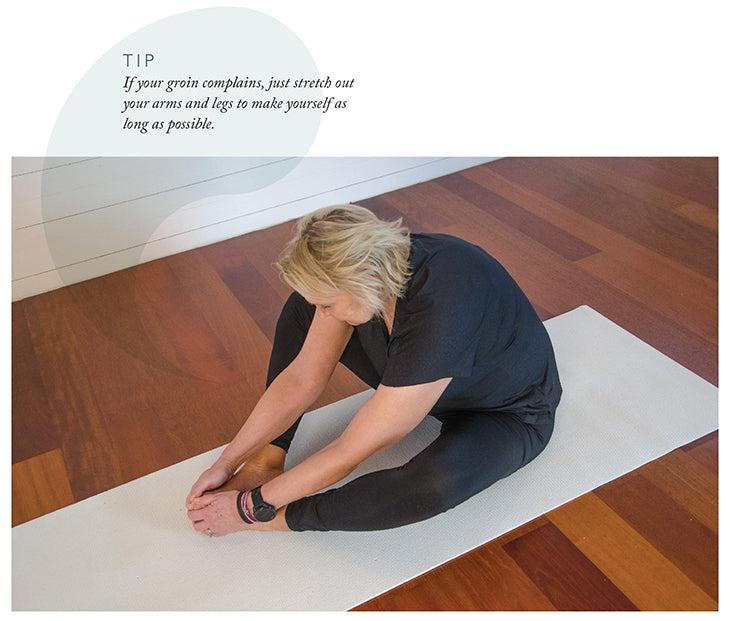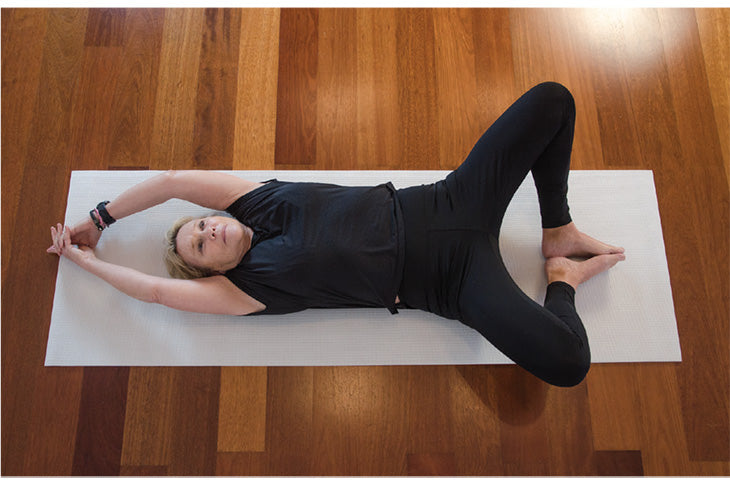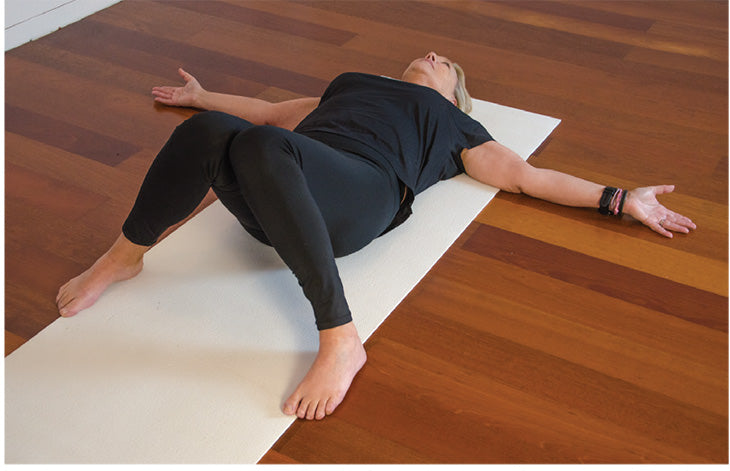Butterfly stretch
This is an excerpt from Yin Yoga 50+ by Paul Steele.
Why it’s good for you
Butterfly stretches your hips, knee joints, pelvis, shoulders, and neck. It stretches your lower back, even if your hamstrings are tight.
The physio says... Hips become tight, especially in men. This pose relieves pressure on your glutes and hips.
How to do it
Bring the soles of your feet together and let your knees fall either side toward the floor. Don’t try to force your knees, just find your edge. Allow your back to fold forward and try to relax.
Bulging discs? Keep straight as you come forward rather than round your back.

Reclining butterfly
From a lying position, bring your knees up and have them flat on the floor. Now put the soles of your feet together and let your knees fall either side toward the floor. Don’t try to force your knees, just find your edge.

Try lifting your arms above your head and resting them on the floor to stretch your shoulders and your upper and lower back.
The easier way
Use a block, sit cushion, or blanket to sit on. If your bones feel supported, your muscles relax.
Coming out of the pose
Straighten up your back until you’re upright. If you need to, push your knees gently with your hands until they come together. Now lie down and relax. If you’re in Reclining Butterfly, bring your arms down by your sides first.
Teepee. Put your feet flat on the floor on the edge of your mat with your knees pointing upward. Now push your knees together.
Window Wipers. From the Teepee position, start to roll your legs down to one side of your mat as far as you can, then up again. Now sink them to the other side. Do as many turns as you like.


SHOP

Get the latest insights with regular newsletters, plus periodic product information and special insider offers.
JOIN NOW


